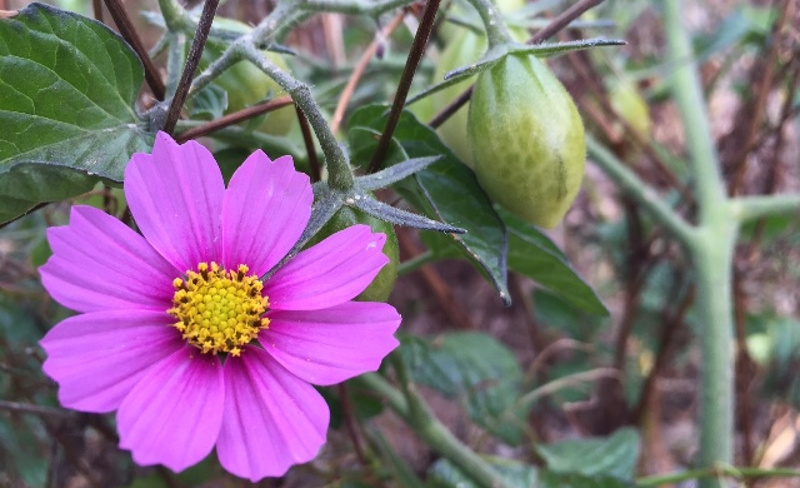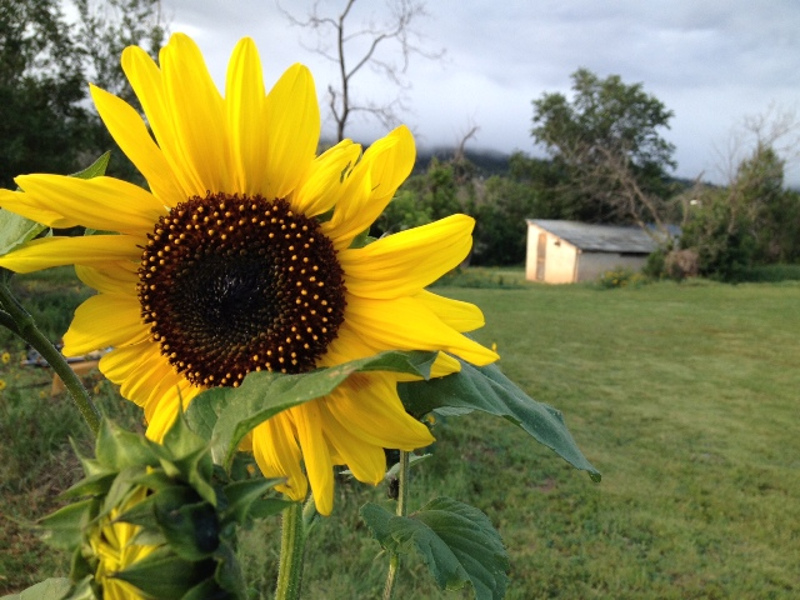It’s more waterwise – and less expensive – to grow perennials. When a plant’s getting started, it needs a little more water. So once a xeric perennial plant has become established, the gardener should not have to add much, or any, water.

By nature annuals last only one year; you’ll have to water seeds or transplants a little more than you will an established perennial. Having mostly perennials in your garden is a waterwise and cost-effective strategy, but most gardeners want to add a little color or variety to their gardens. Enter the annual flower.
You can save money by purchasing annuals as seeds or by selecting native varieties that will likely re-seed in your garden next year. And save water by mulching annual beds after seedlings are large enough. Plastic cups or leftover nursery pots make great “protectors” while laying mulch. Just place cups large enough to avoid bending or breaking the plants upside down on each seedling in the bed, or a portion of the bed, before carefully pouring in your mulch. Then lift the cups and adjust mulch around the plants.
Native annuals also should use less water than “splurge” plants, but you won’t do a ton of damage to your water-wise efforts with a small container of your favorite annual.
Here are some of our favorite annuals, particularly for low-water gardening in zones 6 and 7.
Zinnias
Without a doubt, zinnias are a favorite annual. They’re simple to grow from seed; in fact, zinnias don’t transplant well, although it can be done if you start seedlings in peat pots. This way, you can transplant the peat pot with the seedling when the weather warms. The hardy flower requires sunshine and soil that drains well. Add a little organic matter to the container or bed to ensure drainage.
Deadheading spent blooms keeps flowers coming and helps keep the plant from getting tall and leggy. Besides, the bright orange, red or coral flowers are terrific for arrangements. Check your seed package for flower type, size and plant height when selecting zinnias for annual containers or beds.

A bunch of zinnias adds easy and vivid color to any annual bed.
California Poppy
The California poppy (Eschscholzia californica) is a perennial in warm climates and a frequent re-seeder in moderate zones. The wispy, fern-like foliage has a silvery-gray color, and thin stalks support orange and yellow blooms that resemble a flatter, simpler poppy. Deadheading the flowers is a little bit of work, but well worth the effort. The California poppy technically is an herb, but the plant is poisonous if eaten. It’s a terrific pollinator.

These poppies love sun and heat. Spent blooms are easy to spot for deadheading; the petals drop and leave a long seed head.
Cosmos
A relative of the aster, the cosmos is a varied and versatile flower with nearly 20 species. Just give the flowers lots of sun and avoid overwatering or over fertilizing; too much shade and water can make them lanky. I love cosmos at the back of a bed, but they come in various heights. The flowers easily re-seed, so be sure you like them before planting. Birds land on cosmos plants left in our garden and peck at the seeds all winter.

Cosmos plants can look a little wild, but the flowers normally form a perfect shape. Our grape tomatoes grew into the wild cosmos.
Portulaca
The portulaca family includes purslane, which can be an invasive, water-sucking weed. Still, some people enjoy the edible qualities of purslane. I prefer Portulaca grandiflora, also known as moss rose. The tiny flowers’ foliage resembles rosemary leaves, and the flowers make an excellent groundcover, spreading throughout the summer. They also work well in containers. Space them out, and they’ll quickly fill the container and drape over the edge. Instead of cutting spent flowers, you simply need to pinch off the dried-up bloom to encourage more color.
One caution: portulaca seeds are tiny, and can spread or hide easily in soil. Plant something else in the same container next year, and you’re likely to have a pretty little portulaca pop up.

Tiny portulaca flowers pack a lot of character.
Sunflowers
Who can resist a stunning photo of a field of sunflowers? The Helianthus annuus takes a little more water, but can tolerate brief periods of drought. Between their water needs and propensity to get munched by deer, they’re not the perfect annual for our garden. Having said that, we always try to get a few sunflowers going, especially the crimson-colored varieties. Many of our thriving sunflowers come up as volunteers, likely thanks to area birds.
Sunflowers make perfect pollinators; bees can’t get enough of them. And those that survive deer provide seed for birds in fall. Maybe it’s because I’m so tired of winter, but I can’t wait to see these signs of summer springing up around our property!

Sunflowers signal summer, sun and warmth. I can’t wait!
 |
Author Teresa Odle - Published 12-10-2020 |
